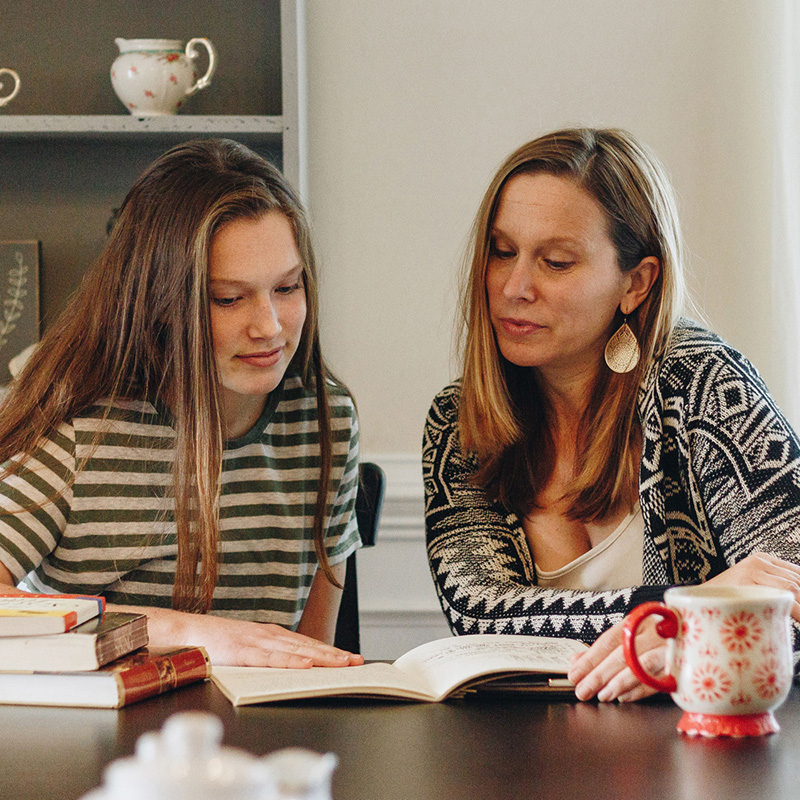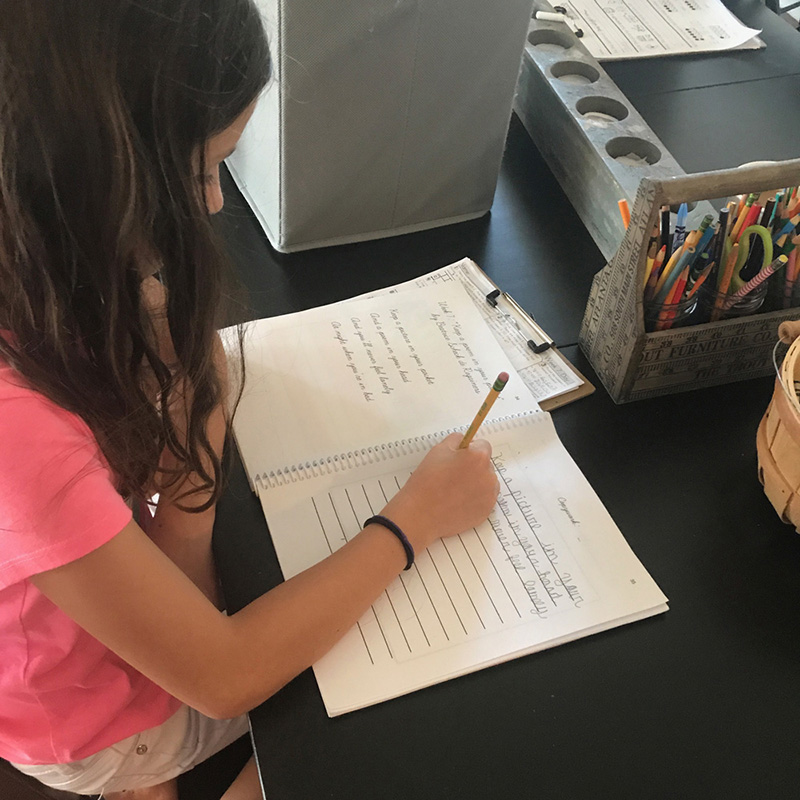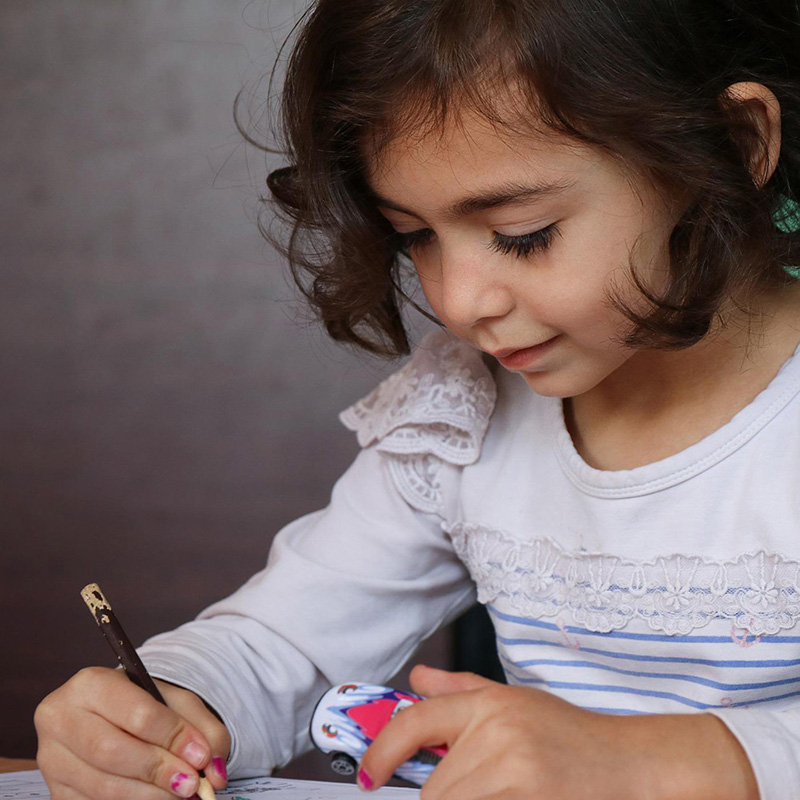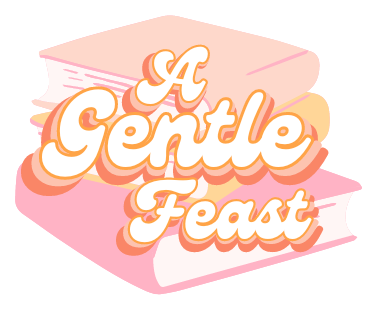Join our FREE class this week!
Feeling buried under workbooks?
Ya know, gotta have one for spelling, handwriting, phonics, vocabulary, composition, grammar
… and that’s just the Language Arts books!
Sound familiar?
You feel frustration mounting as the day goes on because school is lasting FOREVER!
That might be because you’re spending almost an hour on ALL those Language Arts pages.
Some days it feels like pulling teeth to get your child to complete ONE more worksheet.
… if this is you, keep reading.
What if you could approach Language Arts holistically…
with MORE covered in LESS time
AND with less resistance.
The Language Arts materials from A Gentle Feast use Charlotte Mason’s philosophy of teaching these concepts in a truly integrated manner with handwriting, spelling, grammar, composition and MORE



Only 27% of 8th and 12th grade students can write at a proficient level according to The National Association of Educational Progress
according to The National Association of Educational Progress
In 2016, roughly 40% of high school students could not write at a college level
among ACT test takers
We keep pushing writing expectations on younger and younger students, but the results demonstrate this is ineffective at best and harmful at worst.
What if we approached Language Arts by acknowledging the natural stages of language acquisition?

THE SOUP AND SALAD Language Arts
In an age of smartphones and AI, it is more important than ever that we instill children with beautiful language. For everyone from the beginner who is first learning letters to the middle schooler copying Washington’s speech, we have materials to help your entire family build their language acquisition.
Manuscript Handwriting
For children ready for formal lessons, typically around age 6, with fine motor confidence
Through beautiful artwork and stroke-based development, your child will be off making fridge-display-worthy letters.
Cursive Handwriting
Typically for children who have mastered manuscript handwriting
Cursive may be a dying art, but learning and practicing it creates deep connections in the brain—and it even helps keep the ADHD brain focused. Plus, no matter how advanced computers get, your child will still need to know how to sign their name.
Form I Language Arts Packets
For confident readers, generally in grades 1-3
We focus on Charlotte Mason’s ideas around copywork—where children handwrite rich passages from speeches, literature, songs, and poetry—and dictation, which includes transcribing passages while hearing them read aloud. This practice allows children to master spelling, grammar, punctuation, and vocabulary in the context of the passage (rather than through rote repetition or teaching to a test).
We include an all-in-one workbook with brief pages where your child will reinforce their handwriting skills, be introduced to grammar concepts, and practice spelling and vocabulary.
Available in print or cursive font
Form II Language Arts Packets
For grades 4-6
We continue to use copywork and dictation to build comprehensive language skills.
For families using the Main Course lesson plans, this dovetails with the historical periods and rich books you’ll be studying.
The Form II all-in-one workbook enriches your child’s handwriting, instructs them in grammar concepts, reinforces proper spelling, and develops vocabulary. Composition prompts and beginning narrative concepts are also introduced.
Available in print or cursive font
Form III-IV Language Arts Packets
For grades 7-12
We continue to use copywork and dictation to build comprehensive language skills.
For families using the Main Course lesson plans, this dovetails with the historical periods and rich books you’ll be studying.
These all-in-one workbook enriches your child’s handwriting, reinforces proper spelling, and develops vocabulary. Composition prompts and writing concepts are also introduced. Grammar is not included in these packets.
WHAT PEOPLE ARE SAYING
After homeschooling for 20 years now, I don’t want to plan at all. AGF has that taken care of! The Language Arts was the biggest selling point for me! It is simple and easy! The LA we were doing before had my children so very upset. There were just too many expectations. This is in shorter lessons and takes the pressure off of the both of us.
-Mary

Here’s What It Looks Like
You don’t need to spend hours each day filling out workbooks on all the different Language Arts subjects! Charlotte Mason’s holistic approach means you can build language skills with beautiful literature in LESS time.
Teaching A Child To Read Doesn’t Have To Be Complicated.
But let’s be honest, the English language is full of inconsistencies. You could spend years teaching your child all the exceptions to ALL the rules and only progress through a small set of words they can “sound out.”

What if you could teach your child using something that was actually interesting to read?
Phonics rules and nonsense words don’t capture a child’s imagination … therefore, that child isn’t motivated to read.
Instead, Charlotte Mason used nursery rhymes (which children love) to teach sight and sound lessons that are short, sweet, and engaging.
You want your child to love reading.

68% of America’s fourth graders read at a below-proficient level
Fortunately, There’s Another Way To Teach Reading!

100 Gentle Lessons
is different
In an age of smartphones and AI, it is more important than ever that we instill children with beautiful language. For everyone from the beginner who is first learning letters to the middle schooler copying Washington’s speech, we have materials to help your entire family build their language acquisition.
100 Gentle Lessons in Letters and Sounds
Generally appropriate for kindergarteners
You’ll use nursery rhymes and games to build your child’s letter and sound awareness. Oral and auditory reading skills MUST be developed before trying to instruct visual reading.
100 Gentle Lessons in Sight and Sound Level 1
For children ready for formal lessons, typically around age 6
Using Charlotte Mason’s approach for teaching reading through nursery rhymes and a combination of sight words and phonics, your child will read confidently in just a few minutes each day.
100 Gentle Lessons in Sight and Sound Level 2
For children who have completed level 1
Expanding upon level 1, students will build more complex phonics skills and start to read longer stories.

get this free class
Here’s What It Looks Like
You probably learned to read by learning a bunch of rules and filling in endless worksheets. Imagine if you could teach your children to read with rhymes and stories that you both will love!
WHAT PEOPLE ARE SAYING
This is a gentle and easy to use early reading program that uses well-known nursery rhymes to teach reading with a combination of both phonics and sight words. The lessons are short, effective, and enjoyable. They are the perfect fit for a Charlotte Mason based education.
– Amber
The Gentle Lessons in Sight and Sound is easy to do and accomplishes a lot in short lessons. This has been working wonderfully for our daughter and she is gaining a lot of confidence in a very short time, which makes us happy for her. She has said phonics is her favorite subject!
Carrie W.
Before using 100 Gentle Lessons in Sight and Sound, I struggled teaching my son to read. I discovered A Gentle Feast’s 100 Gentle Lessons in Sight and Sound. I am delighted to report that my son is not only doing great, he LOVES it!
– Katrina

“Bob sat on a mat” has got to go.
Your child is craving rich, living ideas as they learn to read.
You could laboriously sound out pages of consonant-vowel-consonant words … BUT …
“Jack and Jill went up the hill” is far more exciting.
When you use a combination of sight and sound, it becomes possible to read such engaging poems. We make it easy for you with our flashcards, word-building tiles, and hands-on activities.
Get started today with this delightful approach to teaching reading.


Ready to simplify your homeschool?
Get all the parts of the Feast for one low monthly price!
We are now accepting
Founding Members for
The Feast Table Membership for the 2025-2026 school year!
© 2024 A Gentle Feast | ALL RIGHTS RESERVED

